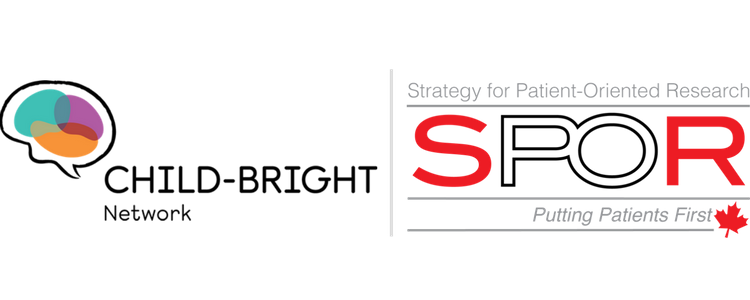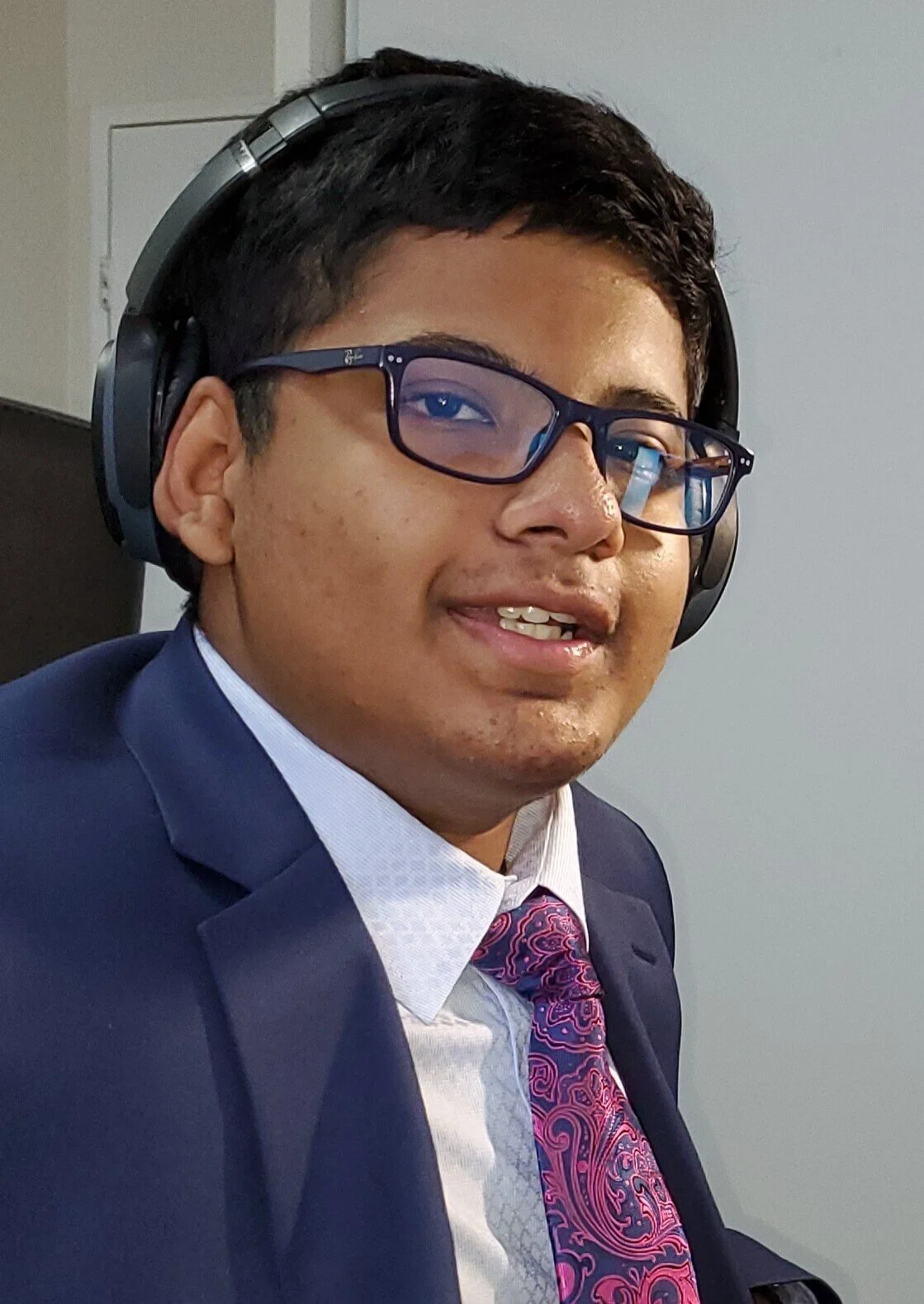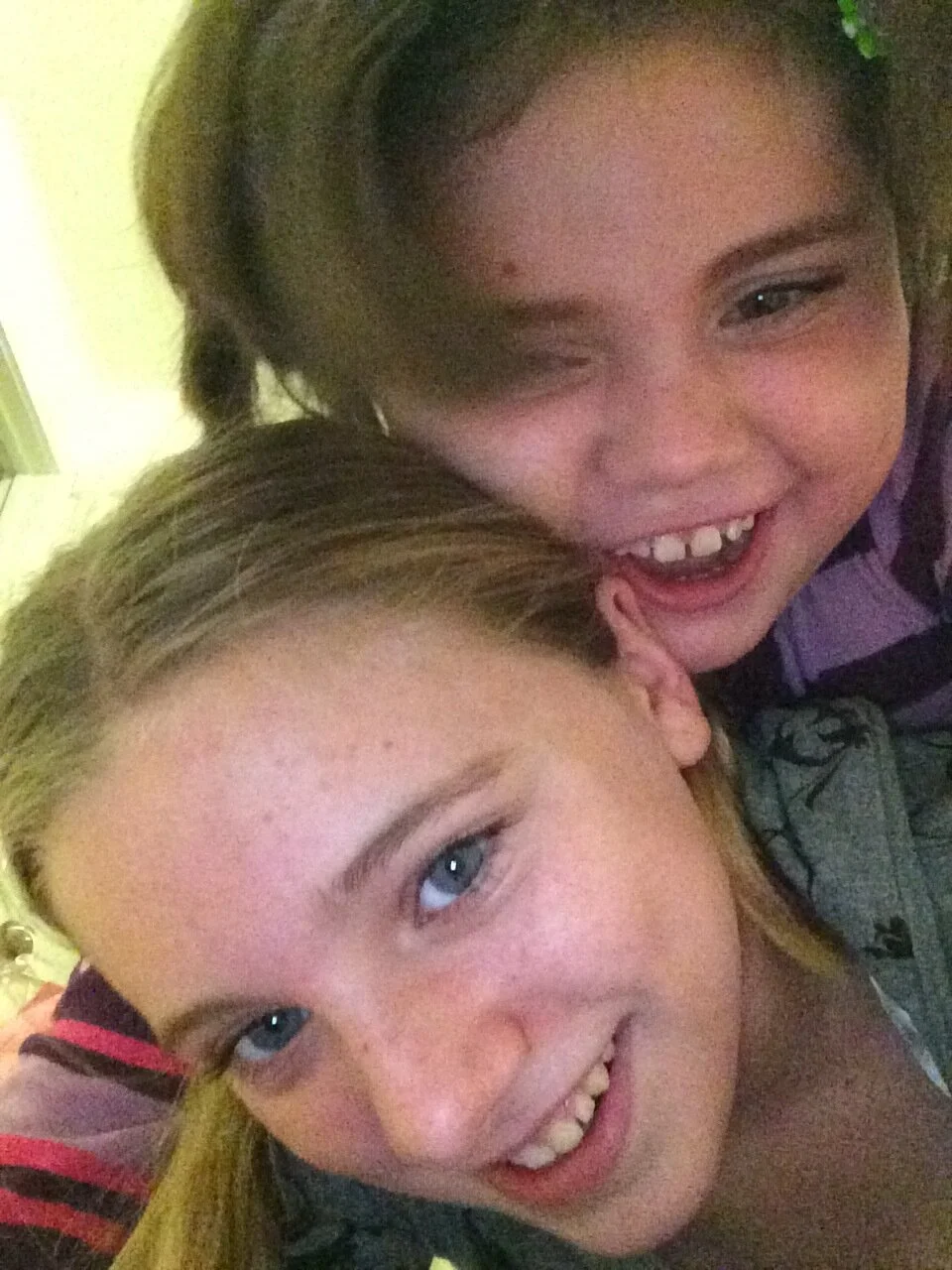November 20 is National Child Day and on this important day for our network, we wish to acknowledge and highlight the crucial role that youth members play in our network and in advancing our mandate of improving health outcomes for children with brain-based developmental disabilities and their families.
Today, we highlight the work of Ahnaf Al Habib (13 years old), Emma Felices-Costello (12 years old), and Jacob Birchnall (17 years old), three members of the CHILD-BRIGHT community who, on October 8, addressed the United Nations Committee on the Rights of the Child (CRC) during the children’s meeting for Canada. The meeting was part of the 87th pre-session of the United Nations (UN) Committee on the Rights of the Child and represents one important step in the cycle of reviews that the UN does to verify how countries are effectively implementing the rights of children.
Jacob Birchnall
This meeting, hosted in Geneva but held online due to the COVID-19 pandemic, was a dedicated and closed meeting for Canadian youth, including youth with disabilities and youth representing diverse groups in Canada, to share their thoughts, perspectives and recommendations on issues relating to the implementation of the Convention on the Rights of Children in Canada, and to identify challenges that youth currently face relating to having their rights respected.
In total, youth from five children’s rights advocacy organizations from across Canada participated in this meeting. Ahnaf, Emma, and Jacob spoke on behalf of the Participation and Knowledge Translation (KT) Lab, led by Dr. Keiko Shikako-Thomas, Canada Research Chair in Childhood Disabilities and CHILD-BRIGHT’s Knowledge Translation Program Co-Lead.
Here is a snapshot of the points raised by each of the youth.
Ahnaf Al Habib
Ahnaf spoke to the barriers faced by individuals with physical impairments. “In Canada, many physically disabled individuals cannot access conventional public transit for an extensive period of time due to our exceptional weather, often causing blockages of entry points to traditional public transit (such as bus stops)… Individuals require door-to-door transportation methods. While these services are available in many municipalities for travel within the municipal border, there are few affordable services offered for inter-municipal transportation. This restricts a disabled individual's freedom of movement, a fundamental freedom,” he said. “Access to education is [also] limited by a shortage of accessible schools for children who require mobility devices such as wheelchairs, scooters, and walkers. [This] restricts an individual's school choice or inconveniences them into attending a school far from their primary residence… prohibit[ing] a disabled individual from enrolling in various vocational and otherwise special programs… interfering with the pursuit of certain careers.”
Emma Felices-Costello and sister Alej
Emma is the sibling of a non-verbal younger sister with a profound intellectual disability. She spoke on behalf of ‘glass’ children—siblings of a child with special needs. “We are called “a glass child” because we are overlooked by the higher needs of our sibling,” says Emma. “It has been proven that a glass child has quite a bit more stress [when] thinking of the future. I am an extremely important part of [my sister] Alej’s life, because I am her closest friend. As well, once my parents die, me and my other sister will be supporting her and helping her make decisions. Because the siblings are so important, why is there no mention of them in the report about children with disabilities? There are direct mentions to parents, but there is no mention of other family members. It’s very common that the definition of family centered care only includes parents, both literally and figuratively, leaving siblings in the waiting room.”
Jacob Birchnall (photo credit: Daniel Villeneuve)
As a youth with autism, epilepsy and dyslexia, Jacob spoke to the importance of equal opportunities for youth with disabilities in Canada including the need for more part-time employment opportunities and increased training for both employers and employees to improve working conditions for these teens and to protect their human rights. “I want more help to understand and deal with discrimination,” he says. Jacob also expressed a need for more funding for special needs support and resources in the school system, and more flexible academic options to allow youth with disabilities—who often struggle more than their peers academically—to have better access to specialized programs such as Sport Etudes, or to help them achieve a better work/leisure balance. “I had to quit my favourite sport, speed skating, to study all night,” he shared. “Speed skating was important for me because it brought me joy and because I was competing at the provincial level.”
Dr. Shikako-Thomas and Rachel Martens, one of the parent-partners on CHILD-BRIGHT’s Jooay project team and on the CHILD-BRIGHT Policy Hub— also reported about broader research and issues related to children with disabilities in the organization’s pre-session meeting that took place immediately after the youth meeting. This was done in collaboration with other parents, youth, and researchers from CHILD-BRIGHT as well as other networks.
“This is the 7th report of Canada to the UN on the Convention on the Rights of Children, but it is the first time that youth with disabilities have had the opportunity to speak directly to the committee!” says Dr. Shikako-Thomas. “The youth rose to the occasion! By bringing their voices to this international stage, they raised awareness of issues that are uniquely important to them such as accessibility, participation in leisure, access to health and rehabilitation services, inclusive education, and opportunities to exert their citizenship and be respected. At CHILD-BRIGHT, we will continue to amplify their voices and do our part to create forums for youth to be active voices in these important discussions in Canada.”
What is the impact of these testimonials?
The UN CRC Committee generated a report based on the youth input, as well as on input received during a pre-session meeting with other stakeholder groups, and on reports produced by different Canadian children’s rights advocacy groups and organizations. The UN subsequently sent this report to the Government of Canada. As a follow up, the Public Health Agency of Canada invited the organizations and youth to participate together in a debrief session, which occurred in early November. The Canadian Human Rights Commission also invited youth and researchers to engage in a discussion on how we can ensure that the Convention on the Rights of Persons with Disabilities promotes the rights of children and youth with disabilities. Ahnaf and Jacob participated in this discussion and contributed wonderful insight. For example, when asked how they felt that Canada should monitor the implementation of the Convention, Jacob answered that for him, it should be done with the end goal of safety in mind, comparing it to an example in his own experience. “For me, with my epilepsy, we have a device at home that we place under my mattress at night that beeps if I have a seizure. This alerts my mom and dad that they have to come keep me safe. That’s what monitoring looks like to me. It lets people know when I need help.”
Next steps
The Public Health Agency of Canada (PHAC) is the governmental agency responsible for compiling the formal report detailing how Canada is implementing the Convention for the Rights of Children to the UN; the Canadian Human Rights Commission (CHRC) is responsible for the Convention on the Rights of Persons with Disabilities (CRPD). They are expected to follow up on the recommendations put forward by our youth and researchers via reports to the UN. They are also expected to make decisions, create new programs, inform budgeting allocations, and identify the needs and gaps that must be addressed to make these rights a reality in Canada.
The CHILD-BRIGHT community will continue to participate in the process by providing scientific evidence that can inform policies.
We want to thank all youth members not only for their testimonials to the committee, but for opening up about personal issues to them. Their commitment will help advance human rights work for children in Canada going forward.
For more on Canada’s contribution, you can view the List of issues in relation to the combined fifth and sixth reports of Canada, published by the Committee on the Rights of the Child, as well as the Consideration of State Reports and List of Issues Prior to Reporting (LOIPR) of all participating countries.
For more information on how the report process works and how to get involved, you can consult the CHILD-BRIGHT Policy Hub Infographic.








